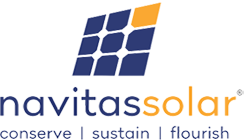Maximize Solar Production: Aditya Singhania on Tracking Systems
In today’s era the biggest problem World is facing is energy crises and we know that fossil fuels are available in very limited amount. Also, there overuse in last 30-40 years has reduced them further. So, now to meet our energy demands the only option we are left is to utilize the Renewable resources of energy which is abundantly available. Solar energy can not only meet our existing energy demands but can also provide us clean and cheap energy. Solar Panels once installed can give energy for several years without having any maintenance cost. The earth is rotating around the sun due to which solar energy in existing Solar panels is available only for a limited time throughout the day. To overcome this problem, solar trackers are used.
A solar tracker is a device for aligning a day lighting reflector, solar photovoltaic panel or concentrating solar reflector toward the sun. The sun’s position in the sky varies with the seasons even with the time of day as the sun moves across the sky. Solar-powered devices function the best when every time pointed at the sun. There are several kinds of solar trackers, of different charges, quality, and performance.
Some best-known type of solar tracker is the heliostat, a movable mirror which reflects the moving sun to a fixed position, but several other techniques will be used as well. The efficiency of the solar tracker depends upon the application.
To achieve maximum solar energy it is necessary to rotate the panel face towards the sun. The device that is used for this purpose is called Solar Tracker. There are various types of Solar Tracking Systems which are classified by its degree of rotation: Single Axis Solar Tracker & Dual Axis Solar Tracker.
Single Axis Solar Tracker
A single-axis solar tracker continues to follow the movement of the sun either horizontally or vertically. As the name suggests, this tracker seems to have just one axis for rotary movement. The horizontal variety of solar tracker is utilized in tropical regions where the sun will receive very way up at midday, except the days are going to be short. On the other hand, the upright kind of solar tracker is employed in regions with elevations where the sun doesn’t have to get high, but summer days are often lengthy. In concentrated solar power processes, single-axis trackers are going to be used with flat surface solar modules.
Dual Axis Solar Tracker
A dual-axis solar tracker seems to have two degrees of rotary motion. It could possibly track the sun horizontally and vertically. This type of tracker may be employed at any place in the world as well as guarantees maximum efficiency in exerting solar energy. Dual-axis tracking is incredibly significant in solar power tower processes because the angle error is important for longer distances between the mirrors in addition to the central receiver situated in the tower structure. Design for dual-axis tracking system is complex compared to single-axis tracking and operation is demanding but, for large scale solar energy production dual axis tracking is more fiscal.
There are various methods of Solar Tracking like Active Tracking, Passive Tracking & Chronological Tracking.
Active Tracking
The position of the sun is continuously determined by the sensors during the day. The sensor triggers the motion of motor or actuator in such a way so that the solar panel will always face the sun throughout the day. Active tracking is accurate with the help of sensors. But the main problem occurs when the sensors fail to discriminate between the measurements and give false trigger or miss original trigger during cloudy days.
Passive Tracking
Passive tracking method does not use sensors like active tracking. Instead of using sensors, a passive tracker moves in response to imbalance in pressure between two points at the ends of the tracker. This pressure imbalance is caused by heat from sun that creates gas pressure from compressed pressure moves the structure. This method does not have to rely on electrical sensors and requires negligible amount of power to operate. However, the mechanical design has to be very crucial to maintain accuracy.
Chronological Tracking
A chronological tracker is a timer-based tracking system. The structure is moved at a fixed rate throughout the day since the sun moves across the sky at a fixed rate of about 15 degree per hour. This method is better suitable for single axis tracking without sensors. For dual axis tracking a modified version can be implemented. The position of sun throughout the day can be calculated and set by the program implemented on the controller module. The solar tracker rotates according to data sent from control unit’s memory of pre-stored data or calculated from given formula.
All the three methods are applicable with single axis and dual axis tracking system. Which method is best suitable, is determined by the location of installation, purpose of generation and demand of solar power. Modern trackers combines both the sensor controlled method and sensor less control method at the same time to increase efficiency.
Double-axis tracking system provide better power stratifications while single axis processes are cheaper and less complex. The comparison between the energy returns of both tracking methods with the fixed traditional PV systems open that the sun tracking system’s energy return is always higher than that of the traditional fixed PV panels. Serious problems occur when any of the sensors is shaded up since this phenomenon can cause an asymmetrical control signal leading to the malfunction of the entire system.
Solar trackers are instruments which will be used to increase the amount of solar energy collected via PV systems via constant tracking of the position of the sun across the sky throughout the day. These methods are aesthetically attractive, environment friendly and are progressively becoming cost-efficient with the growth of the computer systems as well as control systems technologies. The main advantage of using solar tracker is that it increases the availability of solar power from a location. It is evident that the use of solar trackers will certainly increase the efficiency of Solar PV systems but proper care is required while installing solar trackers with these systems.
Navitas Solar, a leading module manufacturing company provides best Solar EPC services considering all the parameters. With Navitas Solar, it will be easy for the solar seekers in India to move forward in adopting green energy, contributing to the National Solar Mission.


 Online | Privacy policy
Online | Privacy policy
Related Posts
You May Also Like
Bonito Series: Driving Innovation in…
Read MoreTOPCon Series: The Next Generation…
Read MoreValuable Points to Remember During…
Read MoreNavitas Planet Partners with Hysolwin…
Read MoreDriving Towards a Sustainable Future:…
Read MoreWhy Do Top-Grade EVA Sheets…
Read MoreBonito Series: Driving Innovation in…
Read MoreTOPCon Series: The Next Generation…
Read MoreValuable Points to Remember During…
Read MoreNavitas Planet Partners with Hysolwin…
Read MoreDriving Towards a Sustainable Future:…
Read MoreWhy Do Top-Grade EVA Sheets…
Read MoreBonito Series: Driving Innovation in…
Read MoreTOPCon Series: The Next Generation…
Read MoreValuable Points to Remember During…
Read MoreNavitas Planet Partners with Hysolwin…
Read More